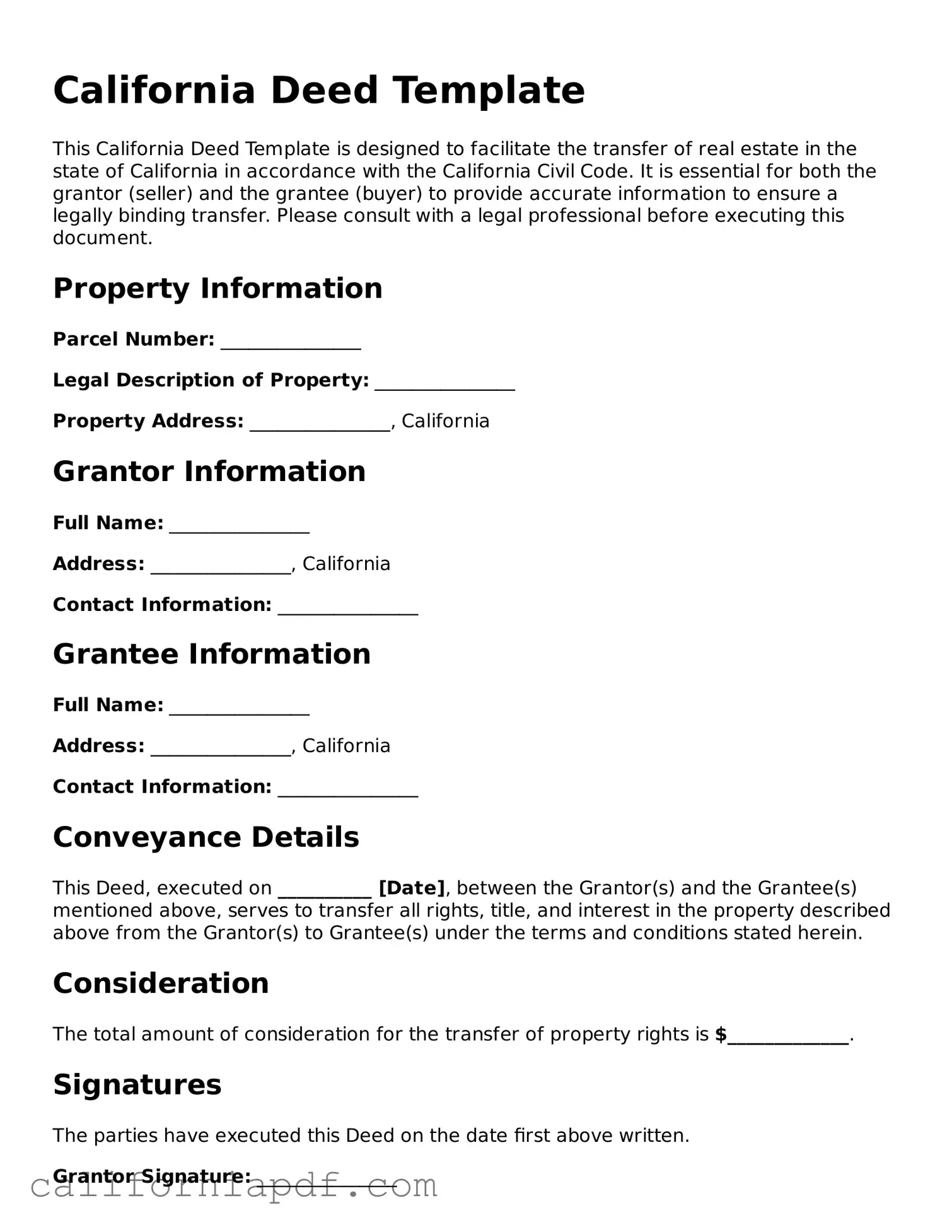The California Deed form shares similarities with a Warranty Deed. Both documents are integral in real estate transactions, offering an official means to transfer property ownership. However, where the Warranty Deed specifically guarantees the buyer that the property is free of any liens or claims, the California Deed form, depending on its type (e.g., grant deed, quitclaim deed), might not always offer such comprehensive assurances. Essentially, both documents serve the foundational purpose of documenting the transfer of property rights.
Comparable to the California Deed form is the Bill of Sale. This document is traditionally used to document the sale and transfer of ownership of personal property, like vehicles or household items, as opposed to real estate. Both documents function as legal evidence of a transfer of ownership, yet they cater to different types of properties. The format and specific protections each offers might differ, but their core purpose of formalizing ownership transition aligns them closely.
The Quitclaim Deed is another document with notable resemblances to the California Deed form. Primarily used for transferring ownership rights in real estate without any warranty regarding the title's quality, the Quitclaim Deed, much like certain types of California Deeds (e.g., California Quitclaim Deed), is a fast and efficient way to relinquish or acquire interest in property. While both documents serve to transfer property rights, the level of protection and guarantee they offer can vary significantly.
The Trust Deed, often confused with the traditional deed forms, shares a connection with the California Deed form. Its primary function is to secure a real estate transaction involving a loan, where the property is held as collateral. Unlike a simple property transfer between buyer and seller, a Trust Deed involves a lender, making it more complex. Despite their differences, both documents are pivotal in real estate transactions, each playing a distinct role in the conveyance and financing of property.
The Grant Deed, specifically used in California, bears a resemblance to the broader category of California Deed forms. While a Grant Deed specifically guarantees that the property has not been sold to someone else and is free from undisclosed encumbrances, it is, in essence, a subset of the various types of deeds available in California. Both aim to transfer ownership rights, providing certain assurances to the buyer about the property status.
Similarly, the Easement Agreement parallels the California Deed form in its capacity to dictate rights over a property. Whereas deeds transfer the title or ownership of property, an Easement Agreement grants a right to use the property for a specific purpose without transferring ownership. Both documents are integral to defining and modifying legal rights associated with real estate, affecting how properties are used or accessed.
The Power of Attorney for Property is akin to the California Deed form because both empower individuals to act concerning real estate matters. However, while a Power of Attorney for Property authorizes someone to manage or transact real estate on another's behalf, a Deed directly transfers property rights. Each plays a crucial role in legal procedures involving property, facilitating transactions and management.
The Land Contract is somewhat similar to the California Deed form as another vehicle for real estate transactions. This agreement allows the buyer to pay the seller for the property over time, with the deed transferred only after all payments are made. While both documents are crucial in the conveyance of real estate, their approaches to ownership transfer and the timing of that transfer significantly differ.
Last but not least, the Mortgage Agreement and the California Deed form are connected through their roles in real estate financing. A Mortgage Agreement involves a borrower agreeing to use their property as security for a loan, while various Deeds, including those used in California, can signify the transfer of property that might be subjected to such agreements. Both are essential in the buying and selling process, often working hand in hand to secure financing and transfer ownership.
